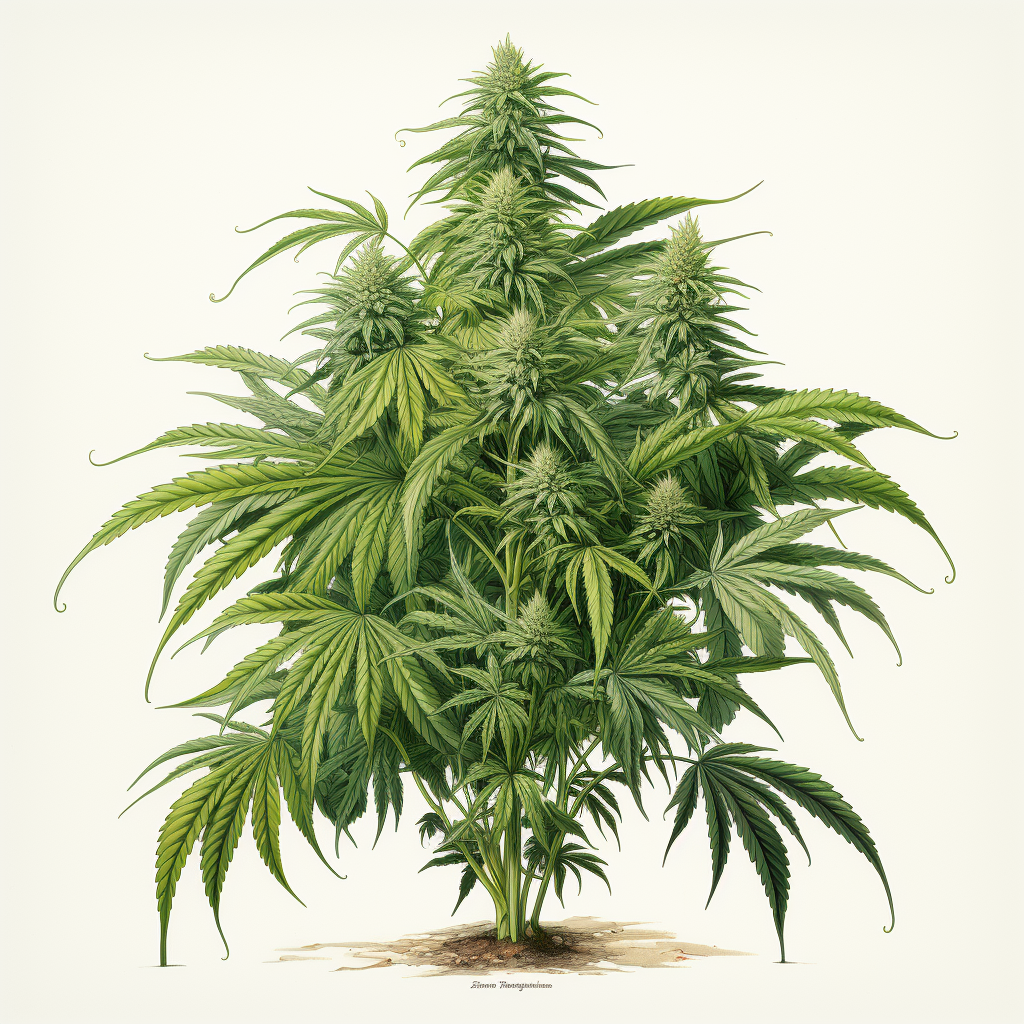The cannabis universe is rich and diverse, with countless strains available, each offering unique effects and experiences. Traditionally, these strains have been broadly categorized as Indica, Sativa, or Hybrid. But what do these terms truly mean?
What are the differences between them, and how much can they dictate your cannabis experience? Let’s delve into the heart of cannabis strains, bust some myths, and shed light on the pseudo-science around these terms.

Understanding the Basics: Indica vs. Sativa vs. Hybrid
First things first, let’s define what these terms mean. ‘Indica’ and ‘Sativa’ were initially introduced in the 18th century to classify different species of cannabis based on their distinct physical traits.
Indica plants are typically shorter, bushier, and have broader leaves, while Sativa plants are taller, thinner, with narrow leaves. ‘Hybrid’ refers to strains created by crossbreeding Indica and Sativa plants.
Over time, these classifications have been commonly associated with specific effects. Indica strains are often marketed as body-relaxing and calming, Sativa as uplifting and energizing, and Hybrids as offering a balanced mix of both.
The Science and Pseudo-Science of Indica and Sativa
While it’s tempting to simplify the cannabis experience into the Indica-Sativa dichotomy, the reality is more complex.
Modern scientific research suggests that the effects of cannabis strains depend less on their Indica-Sativa classification and more on their chemical composition, namely the balance of cannabinoids (like THC and CBD) and terpenes (aromatic compounds that influence flavor and effects).
Just classifying a strain as Indica or Sativa could be misleading due to the extensive crossbreeding that has occurred in the cannabis industry. Most strains on the market today are hybrids to some degree, with varying Indica-Sativa ratios and a diverse array of cannabinoids and terpenes.

A Deeper Dive into Cannabinoids and Terpenes
Cannabinoids like THC (Tetrahydrocannabinol) and CBD (Cannabidiol) are vital components that significantly impact the strain’s effects. THC is psychoactive and responsible for the ‘high’ feeling, while CBD is non-psychoactive and known for its potential therapeutic properties. A strain’s THC to CBD ratio can be a more accurate predictor of its effects than the Indica-Sativa classification.
Terpenes also play a significant role in influencing a strain’s effects. These aromatic compounds, found in many plants, give cannabis strains their unique aroma and flavor.
Some terpenes may also enhance or modulate the effects of cannabinoids in what’s known as the ‘entourage effect.’ For instance, myrcene, commonly found in Indica strains, may contribute to a relaxing effect, while limonene, found in many Sativa strains, might promote uplifting effects.
Hybrids: The Best of Both Worlds?
Hybrid strains result from crossbreeding Indica and Sativa plants. They can provide a balance of effects, making them versatile and appealing to a wide range of users.
Hybrids can be Indica-dominant, Sativa-dominant, or balanced, and they may combine the physical characteristics and effects of their parent strains. However, just like pure Indica or Sativa strains, the effects of a hybrid strain depend largely on its unique blend of cannabinoids and terpenes.
Choosing the Right Strain
When it comes to choosing a cannabis strain, the Indica-Sativa classification can be a starting point but should not be the sole deciding factor. It’s crucial to consider the strain’s cannabinoid and terpene profiles, as well as individual factors like your tolerance, desired effects, and personal biochemistry.
The vast world of cannabis seeds, with its myriad of Indicas, Sativas, and Hybrids, can be both fascinating and overwhelming. By peeling back the layers of pseudo-science, understanding the nuances of cannabis, and focusing on the cannabinoids and terpenes, you can navigate this diverse landscape and find the perfect strain that suits your preferences and needs.
Explore the kaleidoscope of cannabis strains – it’s a journey filled with myriad possibilities, boundless discoveries, and unforgettable experiences. After all, in the rich tapestry of cannabis, there’s a strain for every story!





